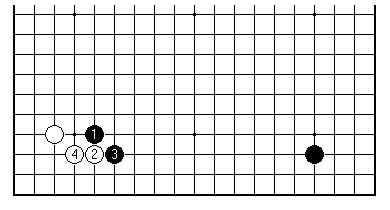

Another path in the Anti-Chinese opens up when Black makes a high approach. White can take the opportunity to play out the corner, instead of making a corresponding approach on the right.

So far so good for White. There are now a number of ways in which Black can try to develop this side as a whole.
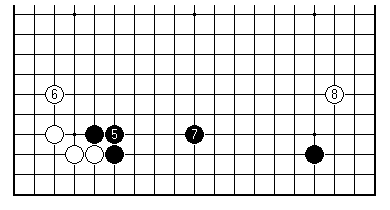
Completing the corner opening this way, with Black 7 played high for balance, is an orthodox idea for Black, giving rise to a position similar in spirit to the Kobayashi Koichi formation mentioned earlier. Now White 8 is usual, played one line more distant from the corner to avoid severe pincers.
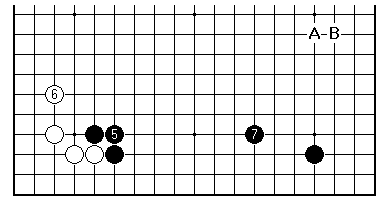
Black 7 here make look curious, but it's another orthodox continuation. Black is anticipating a Chinese enclosure next at A or B, after which the whole framework will look well organised. Therefore White's natural idea is a wedge play at or near B. The positioning of Black 7 affects the corner - White wants to keep a safe distance, Black takes care not to become overconcentrated there. Early fighting on the lower side may be postponed while White gives priority to moves on the right.
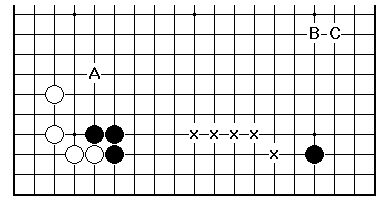
Other plays here include A (Fujisawa Shuko v. Kobayashi Koichi in the 1987 Meijin League), and Chinese enclosures at B and C. These all leave very open positions, in which White has a choice of invasion points such as those marked by 'x'. Clearly White would like to target the Black stones to the left, but since they can run out to A in reasonable shape there is no one obvious plan, and White would also like to control the growth of Black's right-hand corner territory.
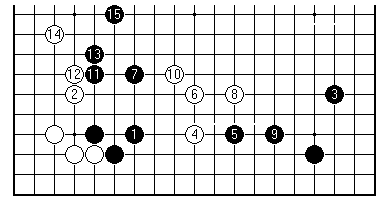
A different tack is to use the hanging connection 1 and enclose with 3. In this Chinese game from 1987 Nie Weiping as White made the light invasion at 4. Both players acquire some territory, and a weak group to mind.
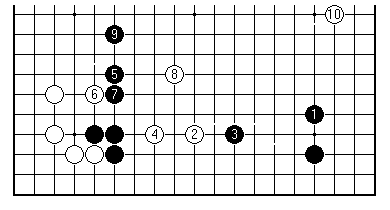
A few weeks before in the Tengen in Japan a game Ishigure-Awaji had gone like this.
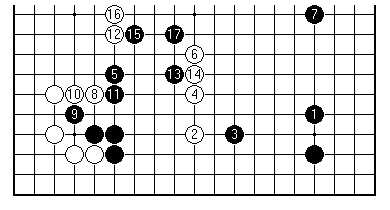
Shortly after those games appeared this one (Fujisawa Shuko-Rin Kaiho in the Oza). A new pattern of fighting was emerging in which Black switched away from the left and changed horses in mid-stream, enclosing the right-hand corner conventionally rather than persisting with the Chinese style.
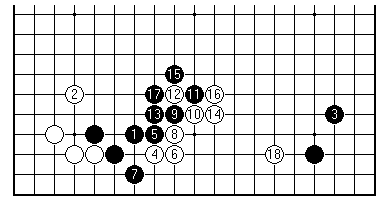
This idea reached centre stage when Kato Masao played it against Kobayashi Koichi in game 3 of the Kisei match early in 1988. Black 3, the tightest ordinary enclosure, makes sense if Black is going to push the fighting rightwards with 9 and 11. Go World 53 comments that 4 is better than the wedge halfway between 4 and 18.
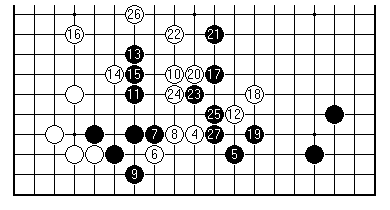
Later that year the pattern was fought over again (Hashimoto Shoji-Rin Kaiho in the Judan), turning into a sharp early dispute over shape. A close game ensued.
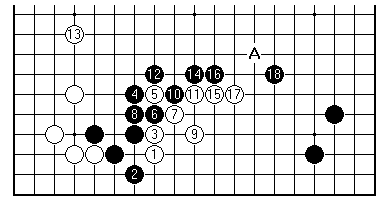
Back again in a top match in 1989, this happened in Game 2 of the Meijin final Awaji Shuzo-Kobayashi Koichi. A pushing battle developed as Black allowed White to play 3. (Locally speaking 18 should be A instead - commentary in Go World 58). Often a trial in one of the high-profile series of two-day games settles the theory of a pattern, on the board or in analysis afterwards. There are a couple more games to report from 1991.
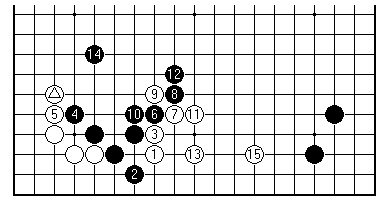
This is from the Chinese promotion tournament, with the marked white stone played conventionally on the third line for solidity. Another game Hashimoto-Goto in the Gosei reprised the Kato-Kobayashi opening, which might therefore have become definitive.
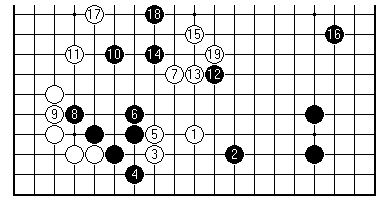
I have a personal interest in this side pattern, having reached it as Black in Game 2 of my British Championship match in 1997 against Matthew Macfadyen. This is how it went, the setting being indeed not an Anti-Chinese but a much rarer diagonal opening. Our amateur fighting is given without comment, beyond saying mistakes later in the game were much more heinous. Matthew's predilection is for database-busting obscure patterns, and so my good start in this game was a minor victory for side-based thinking.
Summing up on the Anti-Chinese, it has become a mainstream opening encompassing many distinctive ideas. Since the Kisei match in 1978, when Black's stubborn plan of continuing with the Chinese as normal was championed unsuccessfully by Kato Masao in the most public possible arena against the brilliance of Fujisawa Shuko, the Anti-Chinese has looked like a very useful way for White to counter Black's first line of thinking.
[01]
[02]
[03]
[04]
[05]
[06]
[07]
[08]
[09]
[10]
[11]
[12]
[13]
[14]
[15]
[16]
[17]
[18]
[19]
[20]
[21]
[22]
[23]
[24]
[25]
[26]
First published 25 January 2001 as On Your Side on MindZine,
Go Learning
© Charles Matthews 2000.